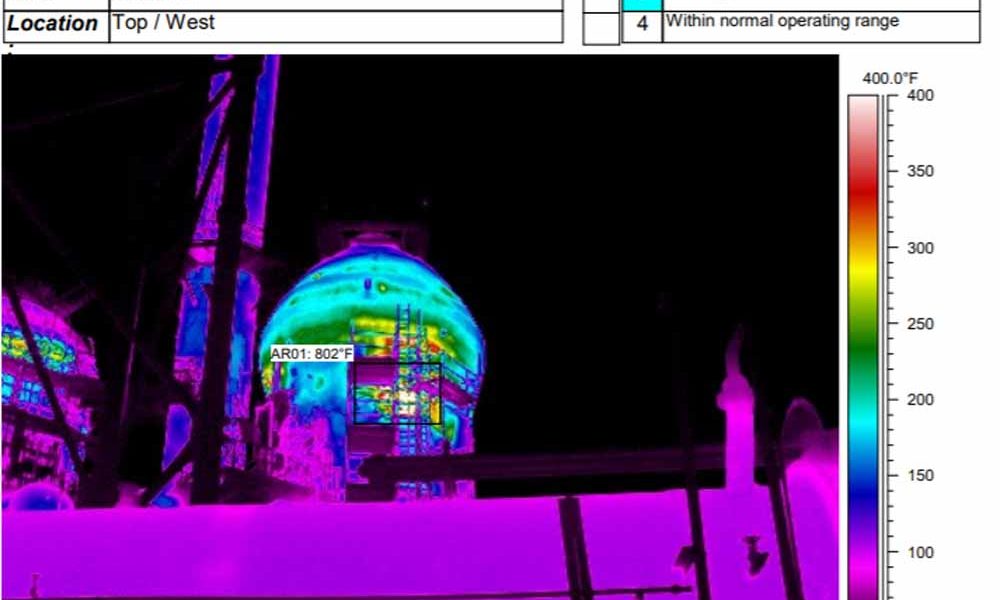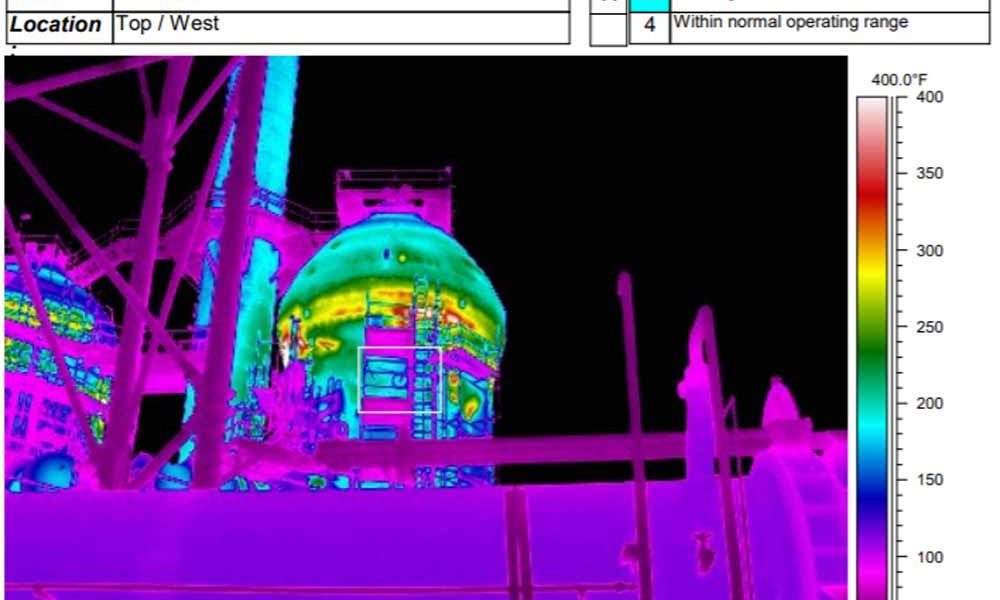Place:
North American Steel Mill
Challenge:
Inside the stove damaged or missing refractory was causing dangerously high temperatures to reach the stove shell. This potentially could cause warping and eventual shell failure. The stove operates at approximately 45 psi with blast temperature above 2000F. The area of concern had a shell temperature of over 800F and measured over 4ftx 8ft in size. To complicate matters, all repairs had to be done while the stove was online and in full service as an adjacent stove was already down for unrelated repairs.
Solution:
The RJ Stacey team performed an onsite inspection of the stove shell and laid out a grid pattern of injector locations. They also surveyed the stove for bulges, carbonization, and cracks attempting to find the source of the heat. This increased the likelihood of having the grout injection flow to and seal the source of the heat infiltration. Once this was laid out our technicians began installing RJ Stacey non-welded high temp injectors. Next, RJ Stacey technicians injected RJS7000 flowable refractory grout into the gap between the stove shell and damaged firebrick within.
Results/Benefits:
Within hours, RJ Stacey lowered the shell temperature more than 400F in the area of concern. The issue originally labeled “imminent failure” quickly changed to “non-urgent fault”. The entire job was done safely and methodically with the stove in full service. RJ Stacey’s process allowed the stove repairs to be made while the Blast furnace continued operation without a slowdown or the excessive gas costs associated with maintaining production with two stoves out of service. The long term safety of the stove was increased, as heat stress was eliminated.


